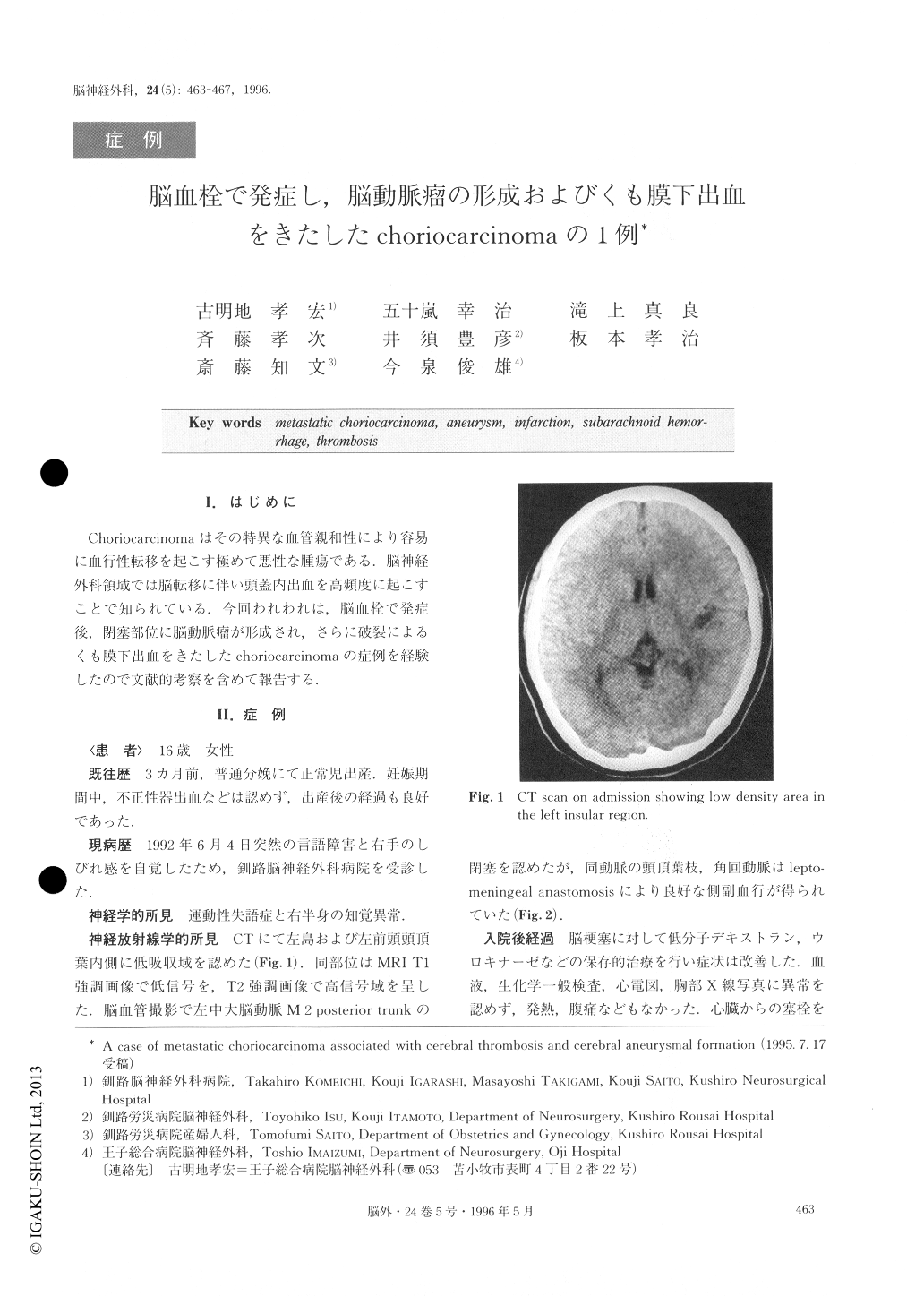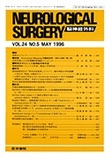Japanese
English
- 有料閲覧
- Abstract 文献概要
- 1ページ目 Look Inside
I.はじめに
Choriocarcinomaはその特異な血管親和性により容易に血行性転移を起こす極めて悪性な腫瘍である.脳神経外科領域では脳転移に伴い頭蓋内出血を高頻度に起こすことで知られている.今回われわれは,脳血栓で発症後,閉塞部位に脳動脈瘤が形成され,さらに破裂によるくも膜下出血をきたしたchoriocarcinomaの症例を経験したので文献的考察を含めて報告する.
A rare case of metastatic choriocarcinoma with cere-bral thrombosis and subsequent neoplastic aneurysm formation and rupture is reported.
Three months after normal pregnancy and normal delivery, a 16-year-old woman was admitted with the chief complaints of speech disturbance and paresthesia of her right upper extremity on June 4, 1992. Both CT and MRI demonstrated cerebral infarction in the left in-sula. A cerebral angiogram revealed that the left middle cerebral artery (about 2 mm in diameter) was occluded in the distal M2 segment. On the 34th day, a follow up angiogram demonstrated a fusiform aneurysm at the same point of the arterial occlusion that had been already recanalized. On the 37th day, she suddenly had severe headaches and consciousness disturbance. CT showed subarachnoid hemorrhage. Resection of the aneurysm and left STA-MCA anastomosis were per-formed. Histological examination revealed that the aneurysmal walls were invaded by choriocarcinoma. On the 60th day, she was transferred to the department of obstetrics and gynecology for chemotherapy. On the 65th day and the 71st day, the patient suffered from in-tracerebral hemorrhage in the left basal ganglia, which originated from a different point of aneurysmectomy. She died because of the rapid growth of liver metas-tases 7 months after initial admission.
Because chest CT and roentgenogram detected no le-sion in the lungs, neoplastic embolus was unlikely as a cause of occlusion of the cerebral artery of about 2 mm in diameter. It would be more reasonable to believe that choriocarcinoma metastasized to the cerebral arte-rial walls initially and formed a thrombus which occluded the artery. As the neoplastic invasion weakened the arterial wall, a fusiform aneurysm was formed when the vessel was recanalized.
There has been no case reported in the literature of neoplastic aneurysms of choriocarcinoma in which the course from aneurysmal formation to rupture was fol-lowed angiographically.

Copyright © 1996, Igaku-Shoin Ltd. All rights reserved.


